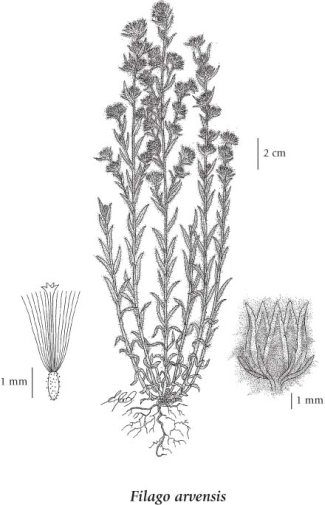© Paul Handford
Click to enlarge and view the photo details
View all photos for this taxon
E-Flora BC Static Map Logfia arvensis Click here to view our interactive map and legend
Details about map content are available here Click on the map dots to view record details.
Open All Headings Close All Headings
Click on the image below to view an
expanded illustration for this species.
General:
Leaves:
Flowers:
Fruits:
Source: The Illustrated Flora of British Columbia
Ecological Framework for Logfia arvensis The table below shows the species-specific information calculated from
original data (
BEC database ) provided by the BC Ministry of Forests and Range.
(Updated August, 2013)
Site Information
Value / Class
Minimum
Average
Maximum
Elevation
(metres)
449 905 1484
Slope
Gradient (%)
0 26 202
Aspect (degrees)
0 176 340
Soil
Moisture Regime (SMR )
0 2 5
Modal
Nutrient Regime
C
Number
of field plots
110
Modal
BEC Zone Class
IDF
All BEC Zones (# of stations/zone) species was recorded in:
BG(1), ICH(12), IDF(71), MS(5), PP(19)
Filago arvensis L.Gnaphalium arvense L., nom. inval.Oglifa arvensis (L.) Cass.
